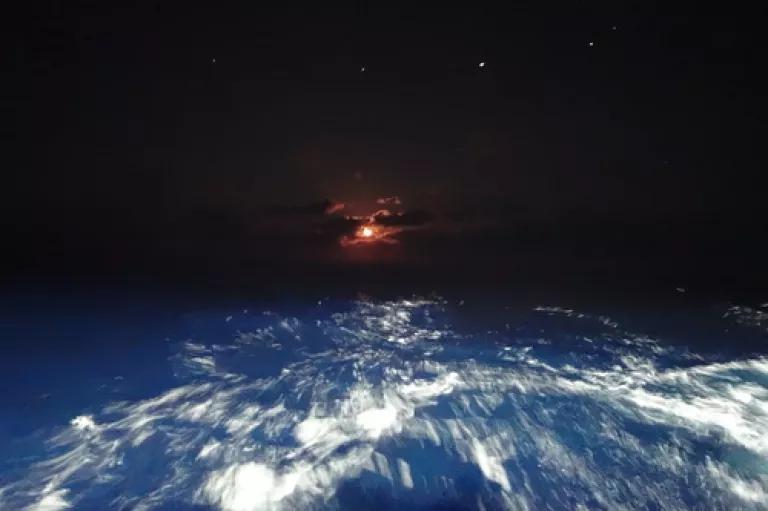Successive storm fronts have forced a premature end to our Atlantic seamounts and canyons expedition. Yesterday, we suffered – and I mean that literally – up to ten foot seas as a storm front came through. A tropical depression is due to hit in the next couple of days and the wave height could again double – the ocean would not be a safe place for the Scarlett Isabella and its passengers.
The team is obviously disappointed. But, as the first to investigate the ecology of Physalia seamount, we made significant discoveries, most importantly that it is home to rare deep sea corals, such as the bamboo and black corals pictured below. It was previously only theorized that Physalia had deep sea corals, largely because they had been found on nearby Bear and Retriever seamounts. The reality of their existence makes it more likely that the New England Fishery Management Council will include Physalia seamount as one of the deep sea coral protection zones it is considering putting in place in the region. This would help safeguard the seamount’s corals which take hundreds of years, if not thousands for some species, to regenerate if destroyed by fishing gear – as well as the marine life that depends on this unique habitat.
The expedition also advanced how we should go about exploring these important ocean features. We demonstrated that the autonomous underwater vehicles (AUVs) used in this instance not only can cover much more terrain than other exploratory technologies, such as remotely operated vehicles (ROVs) or towed cameras, but can also provide a more comprehensive understanding of how deep sea corals fit into the larger seascape. By first using the AUVs’ sidescan sonar, in order to get a detailed picture of the ocean feature’s bathymetry, and then taking color pictures, the team was able to assemble detailed information about large areas of the ocean bottom (depth, substrate, etc.) in which the deep sea corals live as well as to identify the corals themselves. This will enable scientists to better understand what makes good habitat for different species of deep sea corals and what doesn’t. We also made progress in figuring out how to best use AUVs in difficult terrain like that found on the seamounts and in the canyons.
As I lay tossing and turning (not voluntarily) in my bunk last night, I thought of my great-grandfather, a zoologist who specialized in echinoderms, those marine animals recognizable by their radial symmetry (they usually have five points) and including sea stars (starfish), sea urchins, and brittle stars – all species of which we spotted on Physalia seamount. Among his books was The Echinoderms of the Woods Hole Region, written in 1903 about these organisms in the nearshore marine environment around the port towards which we now steam. I never knew him and only recently stumbled across legacies of his life’s work, for which he travelled the globe, but in which he was limited by the technologies of his day. He is claimed to have remarked that nothing was more fascinating to him than “dredging under pleasant conditions on good bottom.” I felt new connections to him, emotional and intellectual – I can only imagine what he would think of AUVs and similar technologies, their less intrusive way of exploring the marine world, and the new discoveries, echinoderm-related and not, that they make possible.
As I close my last expedition blog, I want to give my great thanks, and those of NRDC’s, to the Waitt Institute, which funded and managed the nuts and bolts of the expedition. The mission of the Waitt Institute is to serve as a catalyst for ocean research and exploration by aligning the resources and expertise of collaborating institutions and agencies, and coordinating and conducting expeditionary science throughout the world’s oceans and coastal areas. We are deeply appreciative of the Institute’s embrace of this project and its underlying cause – to ensure that the invaluable resources of the Atlantic seamounts and canyons are safeguarded – and for an amazing nine days of ocean discovery.





